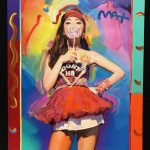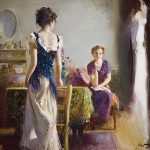Own a Piece of Art History with the Holiday Sale
Have you ever been in a museum admiring artwork by a master artist and thought, “What would it be like to own this? How would it look in my living room or study?”
Owning artwork by an old or contemporary master is a privilege and joy that cannot be compared. Collectors can experience this joy for themselves with Park West Gallery’s Holiday Sale, featuring works by some of history’s greatest artists.
Rembrandt van Rijn (1606-1669)
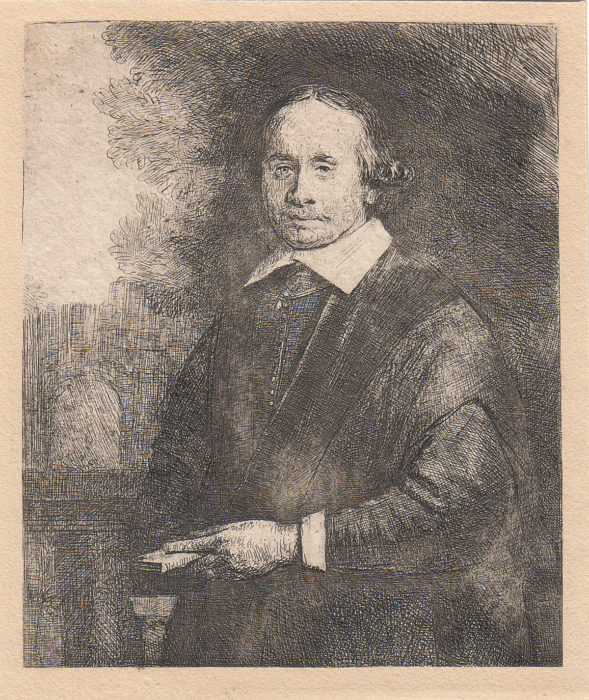
“Jan Antonides van der Linden, Physician” (1665), Rembrandt van Rijn. B., Holl. 264; BB. 65-1
Rembrandt is considered one of the greatest visual artists in the history of art. The artistic genius is known for his mastery of painting, printmaking and draftsmanship. During his lifetime, the Dutch artist earned the reputation of being the greatest etcher in history.
Rembrandt’s “Jan Antonides van der Linden, Physician” is the artist’s last-known etching, created four years before his death. The image was intended to be used for the frontispiece (an illustration facing the title page of a book) of an edition of writings by Hippocrates. The publisher rejected it, as they required an engraving instead of an etching.
Francisco Goya (1773-1812)
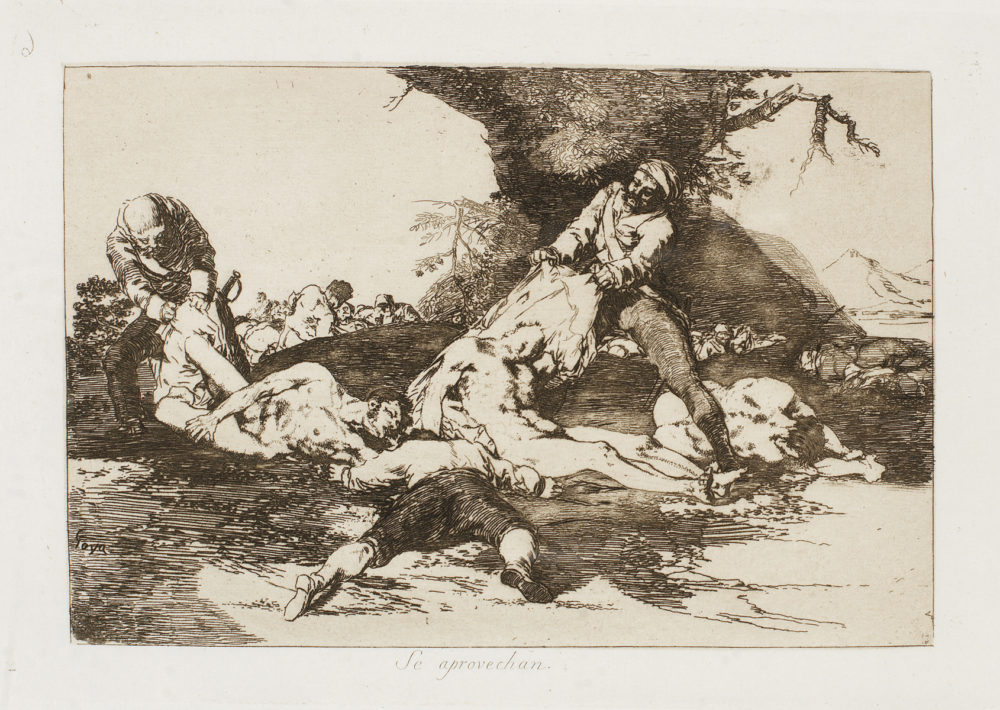
“Se aprovechan” (They make use of them), (1810-1820), Francisco Goya. Delteil 135; Harris 136
Goya is classified as the last of the Old Masters – skilled artists who worked in Europe before 1800 – and the first of the modern artists. The Spanish romantic painter and printmaker is considered the most important Spanish artist of the late 18th and early 19th centuries. He worked as a court painter for Spanish royalty.
Goya suffered from an unknown disease in 1792 that left him deaf. Following this, his artwork became bleak and dark. This theme carried into his collection of 82 prints, “The Disasters of War.” The collection represents his visualization of, and protests against, the atrocities of war in the early 1800s. “Se aprovechan” (They Make Use of Them) shows one such horror – soldiers stripping the dead of clothing.
Pablo Picasso (1881-1973)
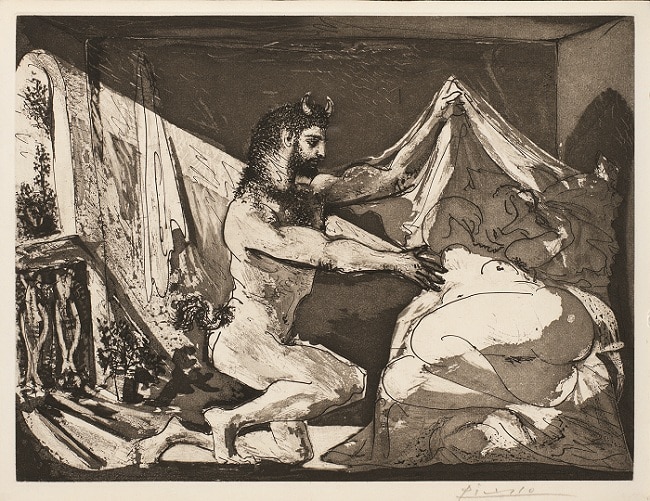
“Faune Devoilant une Femme” by Pablo Picasso.
Picasso is one of the most renowned artists in the world. The Spanish artist is regarded as one of the most influential artists of the 20th century, having co-founded important movements like Cubism and also the medium of collage, and contributing to the development of mediums such as painting, sculpting and printmaking.
“Faune Devoilant une Femme” (The Faun Unveiling a Woman) is part of the Vollard Suite, a collection of 100 etchings by Picasso. This etching is the largest and one of the most celebrated of the Vollard works. The imagery is based on Rembrandt’s etching, “Jupiter and Antiope,” which was inspired by the myth about the Roman god Jupiter’s seduction of a princess. The artwork is said to be Picasso’s acknowledgement of the end of his passionate relationship with Marie-Thérèse Walter.
Marc Chagall (1887-1985)
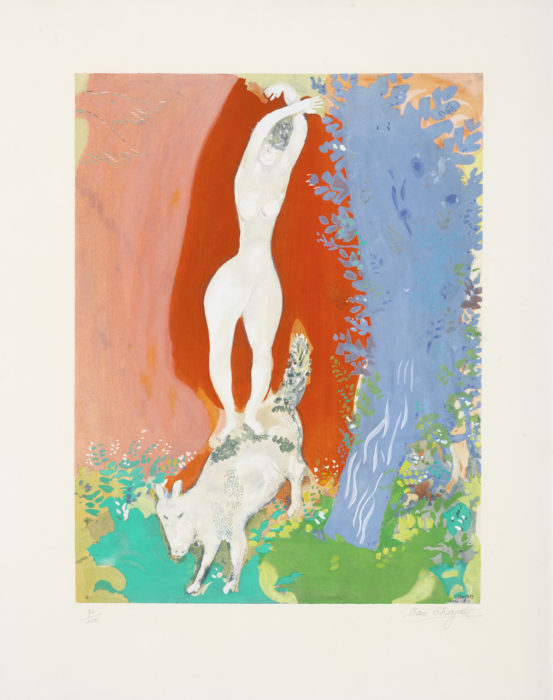
“Femme de Cirque” (1960), Marc Chagall (after)
Chagall created artwork in nearly every format, and is a pioneer of modern art who revolutionized the medium of lithography. The Russian-French artist is counted as one of the most significant Jewish artists of the 20th century.
Park West Gallery’s Holiday Sale features a colorful Chagall lithograph titled “Femme de Cirque” (Circus Woman). Chagall once wrote: “Circus! A magical word, a centuries old entertainment parading before us, in which a tear, a smile, a gesture of arm or leg takes on the quality of great art.” This artwork depicts that sentiment by featuring a female acrobat holding her balance atop a bucking goat.
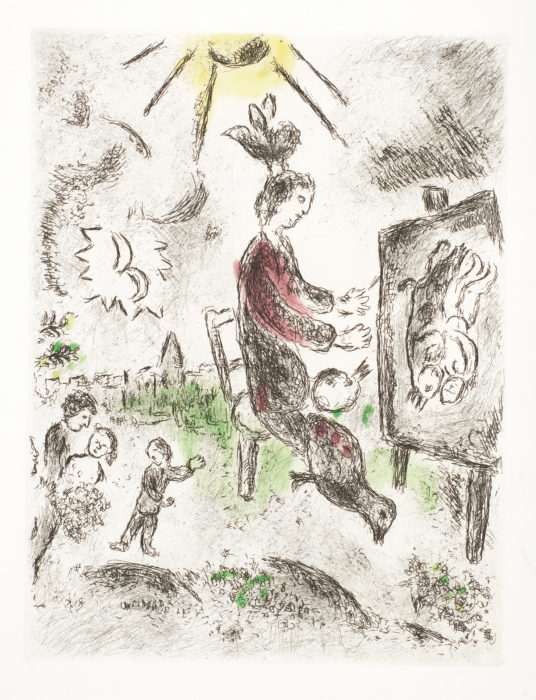
“Celui qui dit les choses sans rien dire” (Those who say things without saying), (1975-76), Marc Chagall. Cr. 99
The second work is an etching, titled, “Celui qui dit les choses sans rien dire” (Those who say things without saying), originating from Chagall’s suite of 25 images that visualize the words of French poet Louis Aragon, a founding member of the Surrealist movement.
Joan Miró (1893-1983)
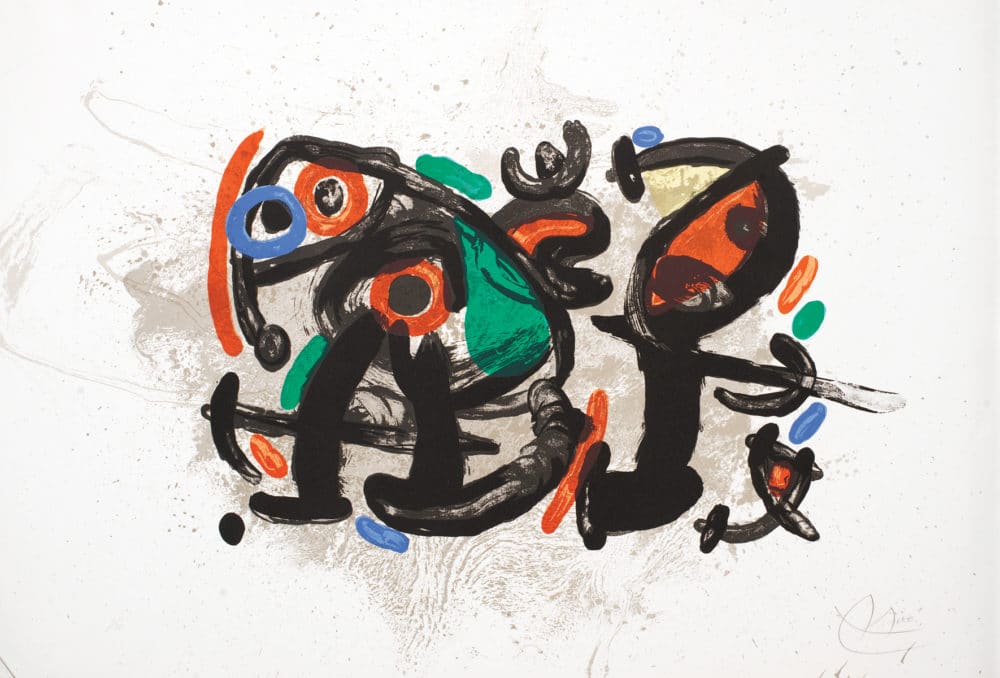
“Ronde Nuit” (Night Watch), (1970), Joan Miro. M. 672; C. books 134
Andre Breton, a founder of Surrealism, called Miró “the most Surrealist of us all.” Miró earned international acclaim for his re-creation of the childlike mindset in his art. The Spanish painter, sculptor and ceramicist developed his style based on Catalan folk art, using organic forms, flattened planes and sharp lines.
The above color lithograph, “Ronde Nuit” (Night Watch), is taken from a catalog for an exposition of Miró sculptures. The artwork may be referencing Rembrandt’s famous painting, “The Night Watch.” With its abstract forms, one can find multiple interpretations of “Rone Nuit.” For example, the black and red shape on the right could be a night watchman armed with a crossbow.
Marcel Mouly (1918-2008)
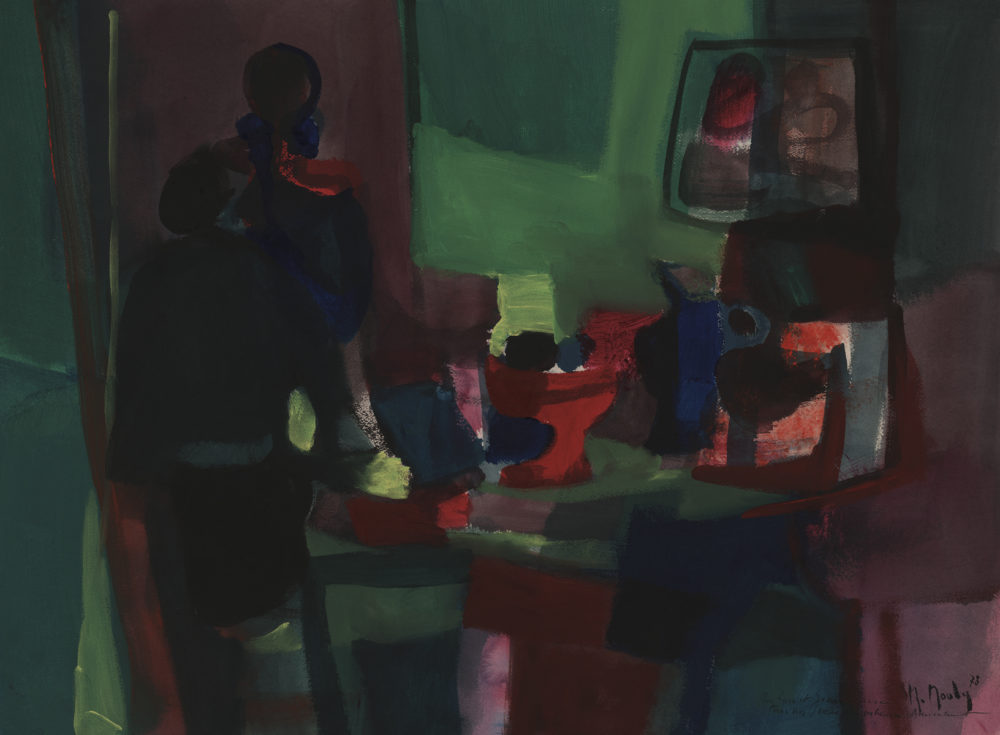
“Le Compotier Rouge” (1978), Marcel Mouly
The boldly-colored, semi-abstract art of French artist Mouly is found in the permanent collections of over 20 museums, including the Museum of Modern Art in Paris. He studied with masters of modern art, including Picasso and Chagall, earning a reputation as one of the most important artists of the late 20th and early 21st centuries.
Park West Gallery offers the chance to own a unique oil painting by Mouly, “Le Compotier Rouge” (translated literally to be “The Red Fruit Dish”). When examining the painting, it is apparent Mouly was deeply influenced by Picasso’s Cubism and Henri Matisse’s Fauvism. Mouly’s connection to the leaders of modern art is even more apparent when one discovers that his art was shown alongside art by Matisse in Paris in 1945.
Contact our gallery consultants at (800) 521-9654 ext. 4 or sales@parkwestgallery.com to learn more about collecting art from the masters.




